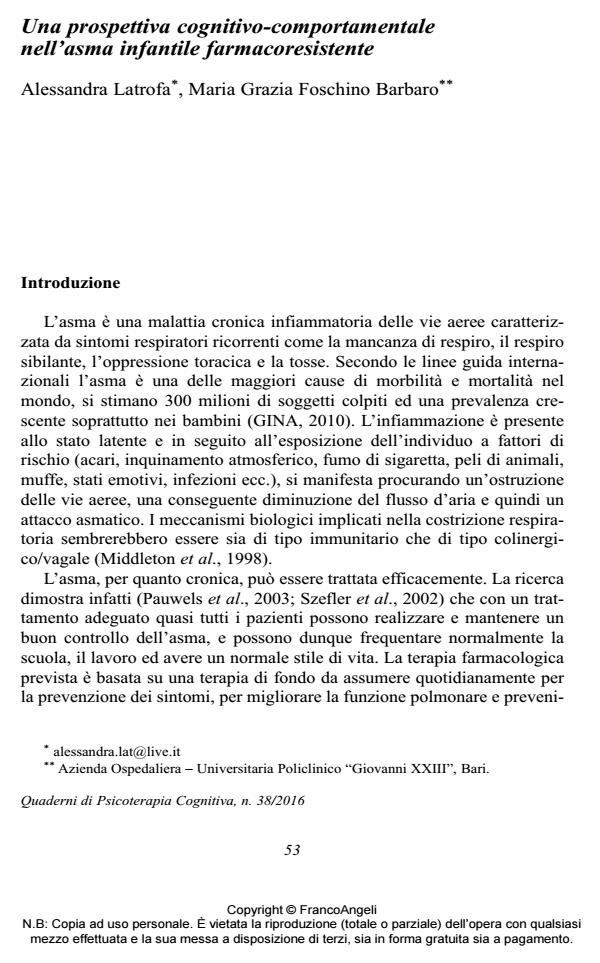Una prospettiva cognitivo-comportamentale nell’asma infantile farmacoresistente
Titolo Rivista QUADERNI DI PSICOTERAPIA COGNITIVA
Autori/Curatori Alessandra Latrofa, Maria Grazia Foschino Barbaro
Anno di pubblicazione 2016 Fascicolo 2016/38
Lingua Italiano Numero pagine 19 P. 53-71 Dimensione file 144 KB
DOI 10.3280/QPC2016-038005
Il DOI è il codice a barre della proprietà intellettuale: per saperne di più
clicca qui
Qui sotto puoi vedere in anteprima la prima pagina di questo articolo.
Se questo articolo ti interessa, lo puoi acquistare (e scaricare in formato pdf) seguendo le facili indicazioni per acquistare il download credit. Acquista Download Credits per scaricare questo Articolo in formato PDF

FrancoAngeli è membro della Publishers International Linking Association, Inc (PILA)associazione indipendente e non profit per facilitare (attraverso i servizi tecnologici implementati da CrossRef.org) l’accesso degli studiosi ai contenuti digitali nelle pubblicazioni professionali e scientifiche
L’asma è una malattia cronica infiammatoria delle vie aeree, responsabile di una grande percentuale di morbilità e mortalità nel mondo. Coerentemente con le linee guida nazionali (GINA, 2010) che prevedono un protocollo di intervento basato su una attiva co-partecipazione e responsabilizzazione del paziente, in letteratura si ritrovano numerosi contributi su programmi di intervento di tipo educativo centrati sulla trasmissione di informazioni tali da mettere il paziente nelle condizioni di poter fronteggiare attivamente la malattia. Nonostante l’efficacia provata di tali programmi, molti sono i casi di asma considerata "difficile". L’obiettivo del presente lavoro è di analizzare alcuni studi presenti in letteratura il cui focus è volto agli aspetti psicologici implicati nel controllo della patologia asmatica. La presenza infatti di rappresentazioni mentali disfunzionali sulle sensazioni corporee e sulla malattia sembrerebbe incidere fortemente sulla qualità della percezione dei sintomi somatici, primo passo verso una corretta gestione della malattia. Allo stesso tempo la presenza di sintomi ansiosi e depressivi sembrerebbe invece influenzare negativamente il grado di funzionamento polmonare e quindi la gravità della patologia asmatica. Dall’analisi svolta si rileva l’importanza di prevedere la realizzazione di programmi di intervento integrati, al fine di promuovere alcuni aspetti centrali per un buon controllo della patologia, migliorando conseguentemente la qualità di vita e lo stato di salute così come inteso dal paradigma biopsicosociale.
Parole chiave:Asma infantile, percezione dei sintomi, ansia, depressione, ristrutturazione cognitiva
Alessandra Latrofa, Maria Grazia Foschino Barbaro, Una prospettiva cognitivo-comportamentale nell’asma infantile farmacoresistente in "QUADERNI DI PSICOTERAPIA COGNITIVA" 38/2016, pp 53-71, DOI: 10.3280/QPC2016-038005